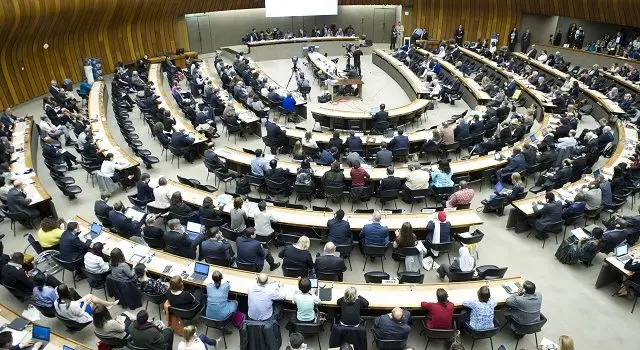Download the media release in Portuguese and Spanish.
RIO DE JANEIRO, 13 October 2022 – With a shift in attitude, investment and policy, millions of lives can be saved every year from cardiovascular disease (CVD) and soaring health costs avoided. Launched today by the World Heart Federation (WHF) at the World Congress of Cardiology, the World Heart Vision 2030: Driving Policy Change, delineates an achievable future that improves health, spares costs and lives, and ensures access to care by the most vulnerable communities.
CVD claims more lives globally than any other diseases, causes premature loss of life, and had affected 523 million people in 2019, almost double the figure of two decades earlier. The World Heart Vision 2030 aims to reduce this number significantly via four paths: paving the way for cardiovascular health equity; fostering timely implementation of knowledge; leveraging innovation and technologies for cardiovascular health; and placing cardiovascular health at the heart of health and climate policies.
“As much as 80% of cardiovascular disease can be prevented if we create better infrastructure, expand access to care, rethink the ways we produce and consume food and clean up the air we breathe,” said Professor Fausto Pinto, President of WHF.
The World Heart Vision 2030 emphasises a multisectoral approach as vital to success in improving cardiovascular health. Exploring challenges and opportunities, the World Heart Vision 2030 is an actionable guide not only for medical practitioners but for policymakers, the private sector, research and academia, and all whose decisions affect diagnosis, treatment, and access to care.
“The cardiovascular health landscape is not all ‘doom and gloom.’ We have been making strides in spreading awareness about cholesterol and hypertension, in new treatments, in telemedicine and other digital health interventions. We continue to stress the importance of nutrition and exercise and tobacco cessation. For our breakthroughs to be impactful, we need health policies and infrastructure that let us implement what we know in ways that are available to, and affordable by, everyone,” said Professor Pinto.
Among the recommendations in the World Heart Vision 2030 are expanding prevention measures, promoting widespread screening, strengthening coordination in management of diseases that impact each other such as CVD and diabetes, and implementing taxes on products known to harm cardiovascular health.
“We can re-imagine and redefine cardiovascular health together. The World Heart Vision 2030 empowers each of us to act and urges every sector to examine its activity and strengthen its role in preventing disease. We hope that leaders in health, policymakers, regulators, and all others will join in rising to this collective challenge and meeting the achievable goals set out by World Heart Vision 2030,“ said Professor Pinto.
Download the World Heart Vision 2030 resources:
World Heart Vision 2030: Driving Policy Change
World Heart Vision 2030 Brief: Driving Policy Change
World Heart Vision 2030: Driving Policy Change PowerPoint
Read our upcoming editorial in our journal Global Heart
World Heart Vision 2030: Driving Policy Change has been developed through an extensive literature review, consultations with multisectoral stakeholders, and a survey to all WHF Members.
For more information, please contact:
Borjana Pervan, Director of Strategy and Communications, [email protected]
About the World Heart Federation
The World Heart Federation (WHF) represents the global cardiovascular community, uniting over 200 Members such as heart foundations, scientific societies and patient organisations, and civil society groups in more than 100 countries to share knowledge and advocate for heart health for everyone. Visit worldheart.org


